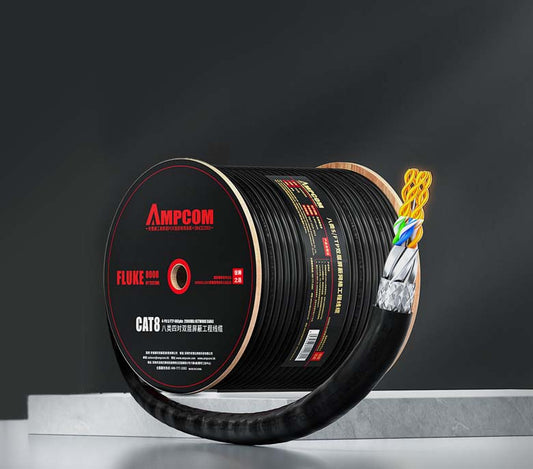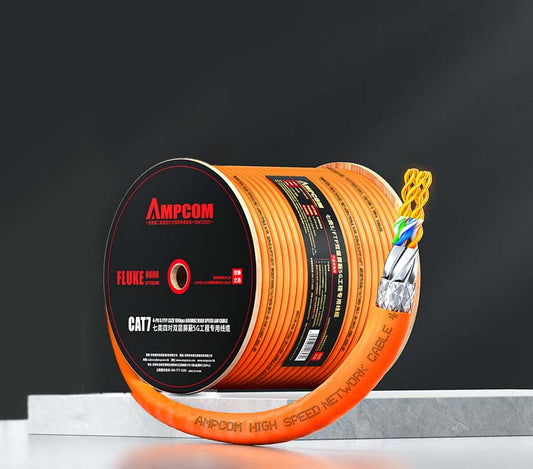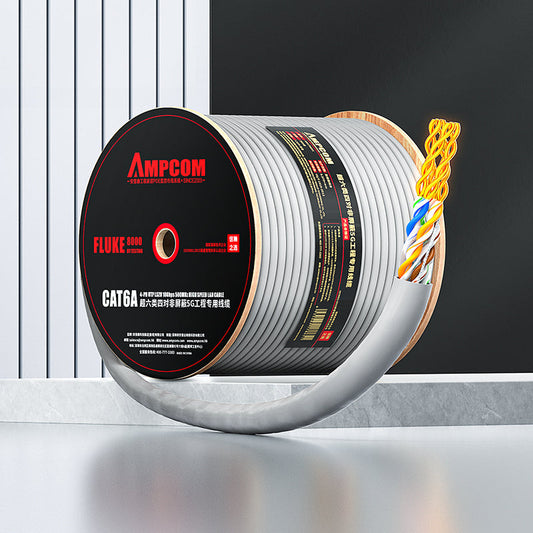What Are the Different Types of Fiber Optic Cables?
In today’s digital era, a reliable fiber optic cable network forms the backbone of communication. From data centers to enterprises and even smart homes, the choice of the right cable type directly impacts the efficiency of an entire fiber optic system. So, what are the different types of fiber optic cables, and how do they work in real-world applications?
Classification by Transmission Mode
The most common distinction is between single mode vs multi mode fiber optic cable. These two categories define how light travels through the fiber core:
| Type | Core Size | Features | Applications |
|---|---|---|---|
| Single-Mode Fiber (SMF) | 8–10 µm | Transmits a single light mode; very low attenuation; supports long-distance transmission up to 100 km or more. | Telecom, long-haul networks, high-speed internet backbone |
| Multi-Mode Fiber (MMF) | 50–62.5 µm | Transmits multiple light modes; higher dispersion; best for shorter distances. | Data centers, LAN, enterprise networks |
Multi-Mode Fiber Standards: OM1 to OM5
Multi-mode fibers are further divided into standards known as OM1, OM2, OM3, OM4, and OM5. These standards define performance differences and are especially important when comparing OM3 vs OM4 fiber optic cable for high-speed networks:
| Type | Core Size | Color | Bandwidth (MHz·km) | 10G Transmission Distance | Applications |
|---|---|---|---|---|---|
| OM1 | 62.5 µm | Orange | 200 | ~33 m | Legacy LAN networks |
| OM2 | 50 µm | Orange | 500 | ~82 m | Small enterprise networks |
| OM3 | 50 µm | Aqua | 2000 | ~300 m | Data centers, 10G Ethernet |
| OM4 | 50 µm | Aqua/Purple | 4700 | ~400 m | High-speed data centers, 40G/100G |
| OM5 | 50 µm | Lime Green | 28000 | Supports SWDM, higher speeds | Next-gen data centers, 400G+ |
Simplex and Duplex Fiber Optic Cables: What’s the Difference?
When classifying fiber optic cables by fiber count, they generally fall into two categories: simplex and duplex.
- Simplex fiber cable contains just one fiber strand. It is typically used for one-way signal transmission or with BiDi (bidirectional) transceivers that are able to send and receive over the same fiber.
- Duplex fiber cable includes two separate fiber strands—one dedicated for transmitting and the other for receiving. This makes it the standard choice for full-duplex communication and point-to-point links with paired transceivers.
In practice, simplex cables are the right fit for BiDi modules or single-direction links, while duplex cables are widely preferred in most two-way networking applications.
Types of Fiber Optic Cable Jackets
The outer jacket of a fiber optic cable is more than just a protective layer—it determines where and how the cable can be safely installed. Different jackets are designed to handle indoor environments, outdoor conditions, or even extreme applications.
- PVC Jacket: The most common and cost-effective option, typically used for indoor applications. Flexible and easy to install, but less resistant to fire and chemicals.
- LSZH (Low Smoke Zero Halogen): Produces minimal smoke and no toxic halogen gases when burned. Ideal for indoor areas with strict safety requirements, such as data centers and public buildings.
- Plenum-Rated: Designed for air-handling spaces like ceilings or ducts, with high fire-resistance and low smoke emission. Required by building codes in many regions.
- Riser-Rated: Suitable for vertical runs between floors. Offers fire resistance but is less strict than plenum-rated cables.
- Outdoor Jackets: Built with UV-resistant and water-blocking materials. Options include armored jackets for rodent resistance and direct-burial jackets for underground installation.
When choosing a fiber optic cable jacket, always consider installation environment (indoor vs. outdoor), safety standards (RoHS, fire ratings), and long-term durability. The right jacket ensures both performance and compliance with safety regulations.
Indoor vs Outdoor Applications
Fiber optic cables are engineered differently for indoor and outdoor environments, ensuring both performance and safety.
Indoor Fiber Cables
- Typically tight-buffered for flexibility and easy termination.
- Jackets are often PVC, Plenum, or LSZH to meet fire safety standards.
- Commonly used in offices, data centers, and residential wiring.
Outdoor Fiber Cables
- Usually loose-tube design, with fibers protected by water-blocking gel or powder.
- Armored options provide resistance against crushing and rodent damage.
- Variants include:
- Aerial fiber cables – self-supporting for pole installations.
- Direct burial cables – designed for underground use.
- Submarine cables – built for undersea long-distance communication.
👉 When planning a fiber optic system, it is common to use outdoor-rated cables to bring connections into a building, and then switch to indoor-rated cables for the final link to devices.
Connector Endface Polishes: PC vs UPC vs APC (plus MPO specifics)
The polish (endface geometry) of a fiber connector affects return loss (RL), insertion loss (IL), and overall link stability. Most single-fiber connectors (LC, SC, FC, ST) come in three common finishes: PC, UPC, and APC. MPO/MTP® trunk connectors are available in flat (PC) and angled (APC) variants.
| Polish Type | Endface Geometry | Typical RL* | Typical IL* | Visual Cue | Common Uses |
|---|---|---|---|---|---|
| PC (Physical Contact) | Slightly curved 0° face; basic spherical contact | ~≥40 dB (SM) | ~0.2–0.3 dB | Beige/cream (legacy MM) | Legacy links; largely superseded by UPC |
| UPC (Ultra Physical Contact) | Improved 0° spherical polish with lower surface roughness | ~≥50 dB (SM) | ~0.2–0.3 dB | Blue housings (SM UPC) | Ethernet/transport, general digital systems |
| APC (Angled Physical Contact) | ~8° angled face to deflect reflections | ~≥60 dB (SM) | ~0.2–0.3 dB | Green housings (SM APC) | PON/FTTx, DWDM, CATV, analog/low-noise systems |
| MPO PC (Flat) | Flat multi-fiber ferrule, 0° | ~20–30 dB | ~0.35–0.75 dB (count-dependent) | Usually black/aqua housings | Short-reach MM trunks where RL is less critical |
| MPO APC (Angled) | ~8° angled multi-fiber ferrule | ~50–60+ dB | ~0.35–0.75 dB (count-dependent) | Often green housings/keys | High-speed DC backbones, low-reflection designs |
*Typical targets for reference; exact values depend on connector quality, ferrule material, fiber count, and test conditions.
Mating Rules & Quick Tips
- Do not mix UPC and APC connectors. The angle mismatch causes high loss and can damage endfaces. Always match polish and adapter type.
- Color cues: SM UPC is typically blue; SM APC is green. Multimode connectors often follow jacket colors (beige/aqua/violet).
- When to choose APC: Where reflections must be minimized—PON/FTTx, DWDM, CATV, RF-over-fiber, sensitive analog links.
- When UPC is fine: Most digital Ethernet and transport links where RL requirements are less stringent.
- MPO note: For dense trunks, MPO-APC markedly improves RL over MPO-PC. Verify polarity (A/B/C) and keying, and keep ferrules meticulously clean.
Conclusion
In today’s 5G, IoT, and cloud-driven world, choosing the right fiber optic cable is key to building a stable, high-performance network. With bandwidth needs growing rapidly, investing in the right fiber optic cable today will prepare your network for tomorrow’s challenges. Reliable and standards-compliant fiber optic solutions provider, AMPCOM, helps enterprises build future-proof networks.



